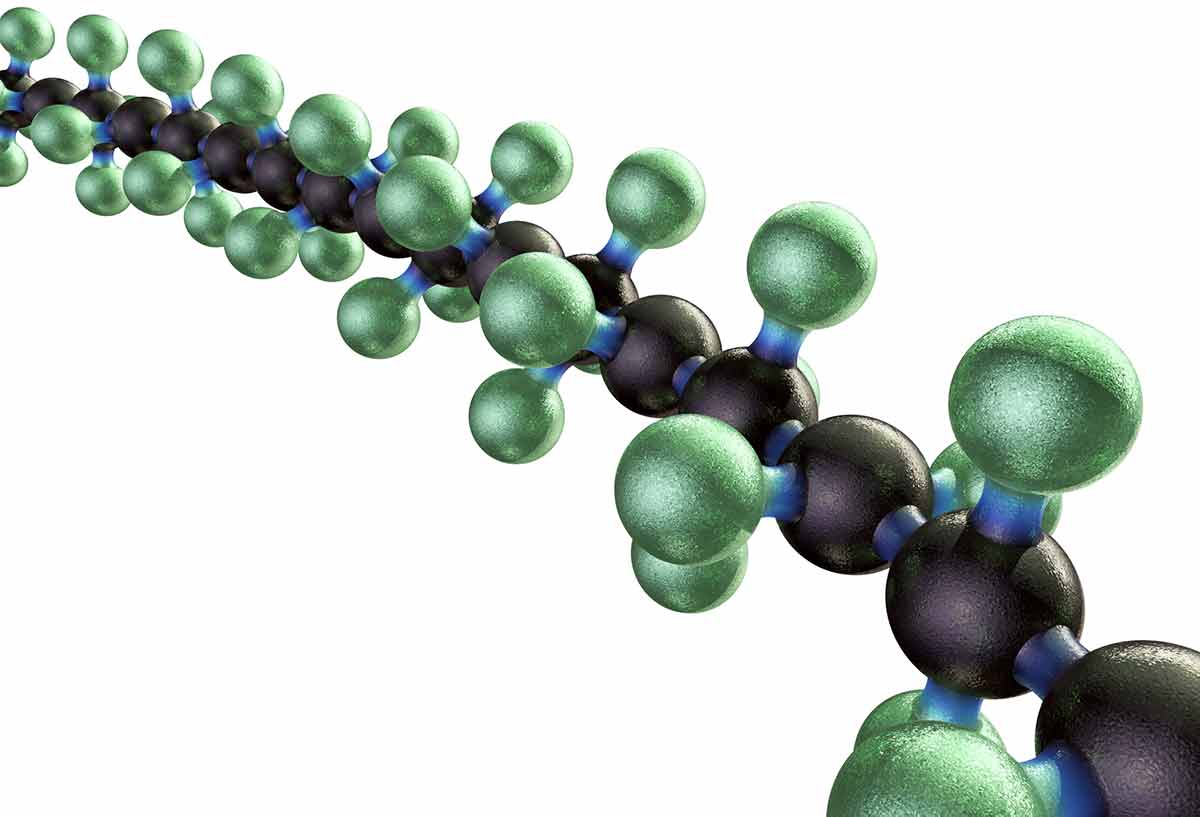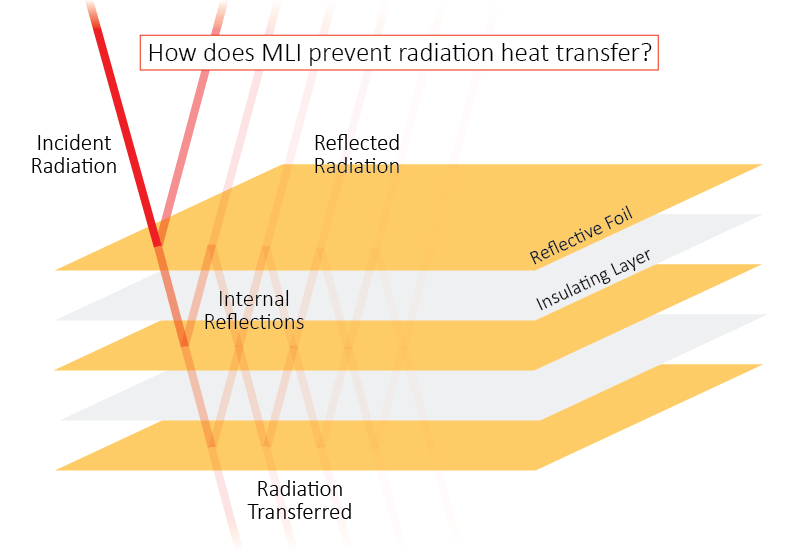Heat transfer refers to various mechanisms by which thermal energy moves from one location to another. There are three primary types of heat transfer: conduction, convection, and radiation. A given transfer of thermal energy may involve one or more of these processes. Phase changes also release or absorb heat.
Conduction heat transfer
Conduction is the direct exchange of kinetic energy passing through boundaries between adjacent particles. Heat transfer occurs when an atom or molecule with more kinetic energy interacts with one that has less. This interaction facilitates the transfer of energy by 1) vibration, or 2) the sharing of electrons.
Both the concentration and complexity of molecules impact conductivity. Conduction tends to increase when simpler molecules are closer together, making it more common in solids because of the proximity of particles. Conversely, energy transfer is less efficient when molecules are further apart, as in fluids. Complex molecules can also inhibit conduction. For example, polymers are complex molecules and are known to be good insulators.

Because conduction depends on the proximity of particles, vacuum barriers are excellent for reducing conductive heat transfer. Vacuum insulation solutions use the absence of molecules in a vacuum to inhibit conduction and convection.
The rate of conduction depends on multiple variables, including temperature difference, material thickness, and contact area. The thermal properties of the materials involved also impact the amount of conduction.
Convection heat transfer
Convection is the transfer of heat through a fluid. Fluids may refer to liquids or gases. Convection involves a large-scale flow of matter which transfers energy from a warmer substance to a cooler one. A car engine being cooled by antifreeze is an example of convective heat transfer. Convection does not occur in solids because bulk flow is not possible.
Natural convection vs forced convection
The process of natural convection is the result of buoyant forces. When the temperature of a gas increases, the density decreases, causing the gas to rise. Forced convection occurs via fan, pump, or other mechanical means.
Radiation heat transfer
Radiation transfers heat via electromagnetic waves. Importantly, they do not need a medium to propagate; radiation can travel through a vacuum. For example, energy is transferred from the sun to the Earth through the vacuum of outer space via radiation.
Radiation’s effect can be limited by reflecting it away, providing a form of thermal insulation. For example, multi-layer insulation is used to reduce radiation heat transfer in a variety of applications including aerospace.

Phase changes
Phase change occurs when matter transforms from one state to another. A liquid freezing into a solid or evaporating into a gas are both examples of phase change.
Convection is sometimes accompanied by a phase change. For example, evaporative cooling occurs when water vaporizes. Heat is transferred from the water’s surface into the rising vapor. In industrial settings, single-effect and multiple-effect evaporators harness this phenomenon.
Conversely, condensation is a gas-to-liquid phase change. The condensation of water vapor into liquid releases latent heat. A similar latent heat release occurs when water freezes into ice.
Heat transfer and thermal engineering
Heat transfer is a specific discipline in thermal engineering. It deals with the impact of conduction, convection, and/or radiation in specific applications. Engineers work to optimize the energy efficiency of their device or system. They use thermal insulation and management tools to control the rate and direction of heat flow. Thermal insulation technologies are used to reduce or shield against heat transfer. Thermal management technologies are used to direct or increase heat dissipation.
